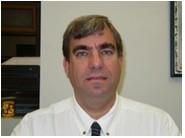


| Prof. Rick S. Blum |

Biography: Dr. Blum is a Fellow of the IEEE, a former IEEE Signal Processing Society Distinguished Lecturer, an IEEE Third Millennium Medal winner, a member of Eta Kappa Nu and Sigma Xi, and holds several patents. He was awarded an ONR Young Investigator Award and an NSF Research Initiation Award. His IEEE Fellow Citation “for scientific contributions to detection, data fusion and signal processing with multiple sensors” acknowledges contributions to the field of sensor networking. Since 1991, he has been with the ECE Department at Lehigh University in Bethlehem, PA where he is currently a Professor and holds the Robert W. Wieseman Chaired Research Professorship. His research interests include signal processing for smart grid, communications, sensor networking, radar and sensor processing. His PhD and MSEE are from the University of Pennsylvania. Abstract: In this lecture, I review our recent work on the performance of passive radar networks with multiple transmit and receive stations employed for estimation. In the first part of the lecture, after setting up the observed signal model, I will describe the Cramer-Rao (CRB) bound for estimating the position and velocity of an object using a passive radar network. Substantial gains are demonstrated from employing multiple signals of opportunity and multiple receive stations using optimal processing. Maximum likelihood estimation approaches are shown to achieve the bound for small mean-squared errors (MSEs). While the CRB is probably the most studied performance bound for estimation, it is a local bound which is only generally applicable for large observation sample sizes or SNR and is unable to incorporate prior information. In the second part of the talk we describe the Ziv-Zakai bound (ZZB) for estimating the position and velocity of an object using either an active or passive sensor network. We demonstrate that the ZZB can provide more accurate prediction of the performance of estimators over the full range of possible MSEs and it can incorporate prior information. Time permitting, I will describe the first results on extensions for powerful enhanced signal models of considerable interest to practical engineers for which these bounds have never been previously studied. |